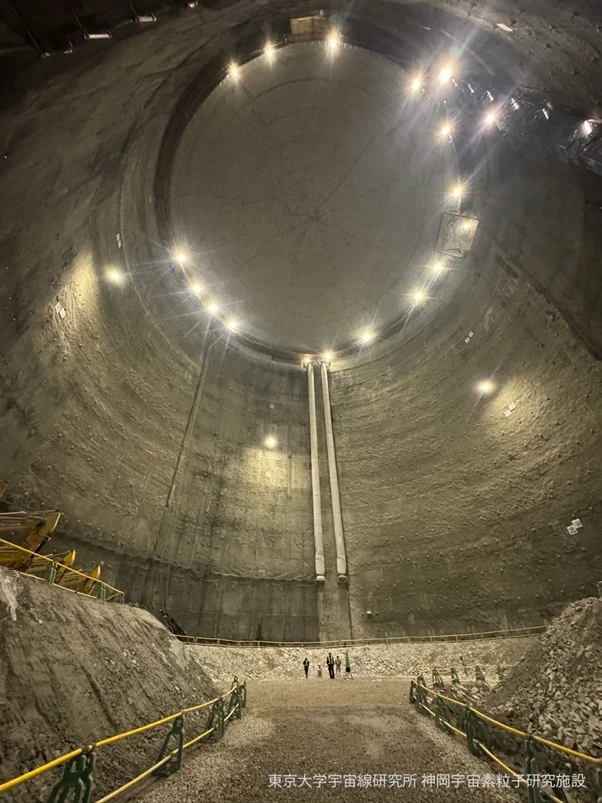
Excavation of enormous cavern for Hyper-Kamiokande experiment completed
In July 2025, the University of Tokyo completed the excavation of a vast underground cavern that will house Hyper-Kamiokande, a massive neutrino detector. The cavern is located 600 metres below ground near the city of Hida in Gifu Prefecture, Japan. Our university is involved in this ambitious undertaking.
Hyper-Kamiokande (Hyper-K) is an international scientific project coordinated by the University of Tokyo and the High Energy Accelerator Research Organization (KEK). It involves 640 scientists from 22 countries, including researchers from the University of Wrocław.
— My team is investigating neutrino interactions and simulating those interactions using the NuWro Monte Carlo generator — says professor Jan Sobczyk.
Hyper-Kamiokande is a next-generation detector, consisting of a gigantic water tank with a volume 8.4 times greater than its predecessor, Super-Kamiokande, and equipped with over 20,000 photomultiplier tubes.
Alongside the construction of Hyper-K, KEK is also overseeing the upgrade of the J-PARC neutrino beam and the construction of a new intermediate detector in Tokai. The combination of these two investments will allow for more precise studies of neutrino properties and enhanced capabilities in the search for hypothetical proton decay.
— This research is of great importance for testing theories of elementary interactions. It is also highly significant for astrophysics — adds prof. Sobczyk.
The Hyper-K project officially began in February 2020. Its main chamber consists of a domed roof section approximately 69 metres in diameter and 21 metres high, beneath which lies a cylindrical section measuring 73 metres in height.
The chamber is one of the largest man-made spaces ever excavated in bedrock.
The construction site lies in an area of Japan known for its most resilient rock formations. The characteristics of the rock mass and the in-situ stress conditions had a significant impact on the stability of the chamber both during and after excavation. Prior to the start of excavation in 2020, extensive geological surveys were carried out, including a total of 730 metres of boreholes and the digging of new tunnels.
From August, construction work will begin on converting the main chamber into a giant water tank capable of holding 260,000 cubic metres of ultra-pure water. The two-layer structure of the detector is scheduled to be built starting in 2026, with the installation of photomultiplier tubes and other components to follow thereafter.
— The principle behind Hyper-K is simple. Neutrino interactions produce charged particles such as electrons. As they move, they emit Cherenkov radiation, which is then detected by the photomultiplier tubes. The detector must be enormous because neutrinos are extremely penetrating and interact very rarely with the matter they pass through — explains prof. Sobczyk.
All internal detector components are expected to be installed by 2027, after which the tank will be filled with ultra-pure water. Hyper-K is slated to begin operations in 2028.
— Earlier research in Japan using smaller detectors, Kamiokande and Super-Kamiokande, was recognised with Nobel Prizes in 2002 (Masatoshi Koshiba) and 2015 (Takaaki Kajita). That’s why the physics community is eagerly awaiting the launch of Hyper-Kamiokande — he concludes.
Complied by Katarzyna Górowicz-Maćkiewicz
Date of publication: 6.08.2025
Added by: M.K.



